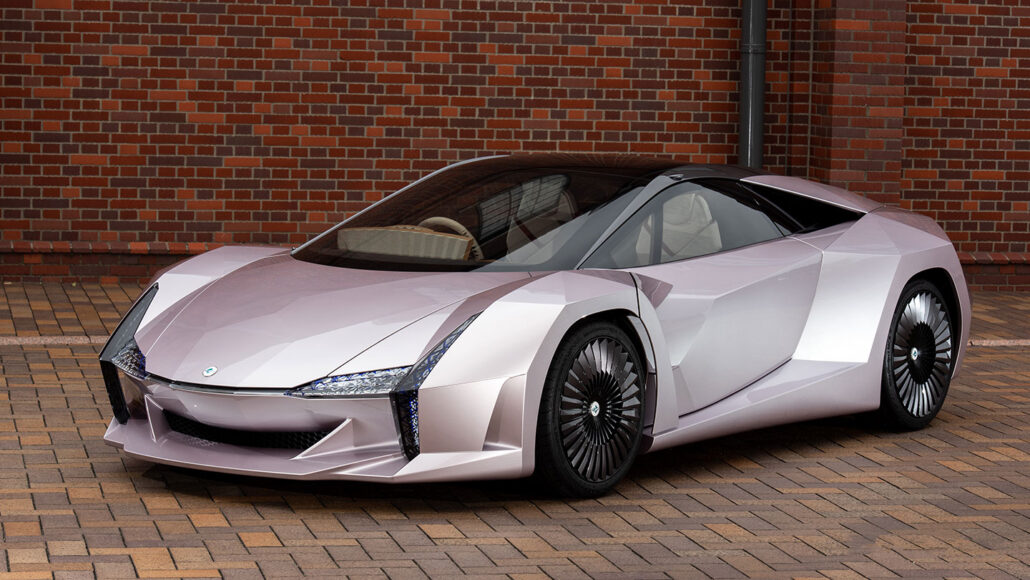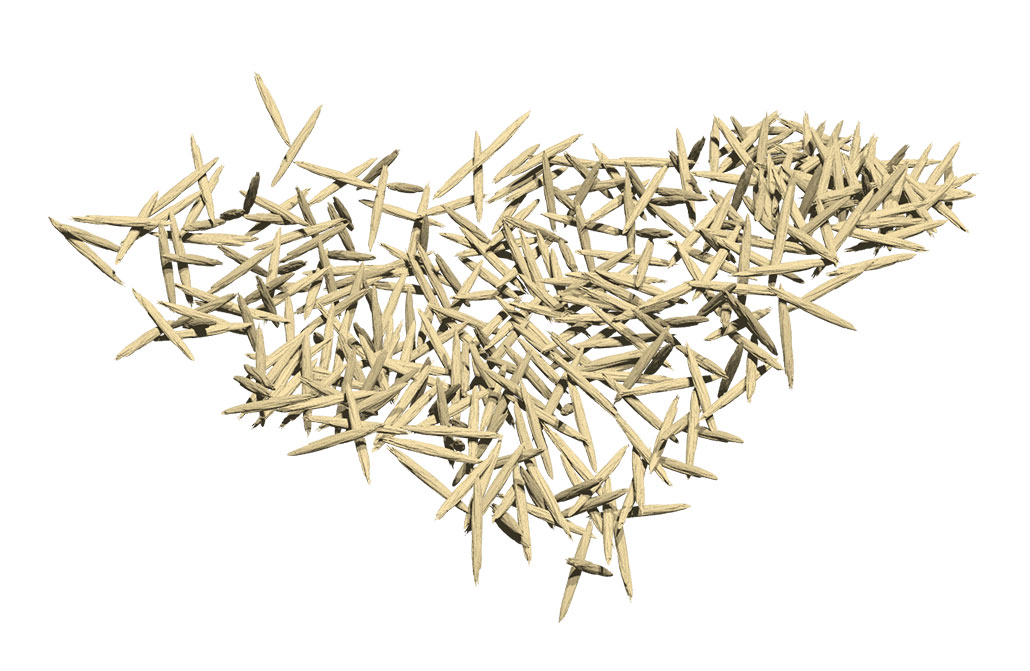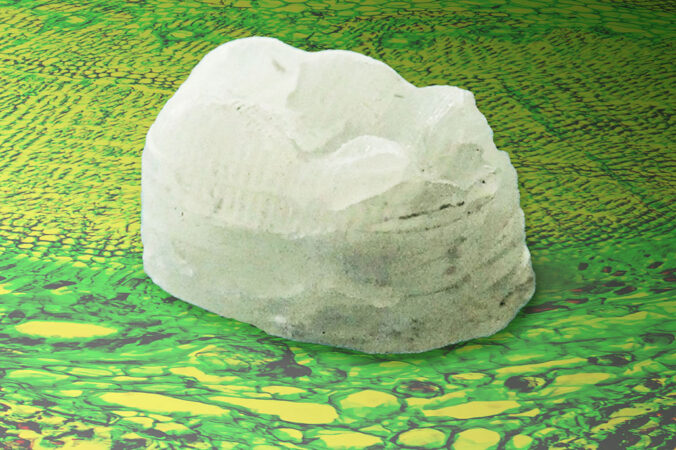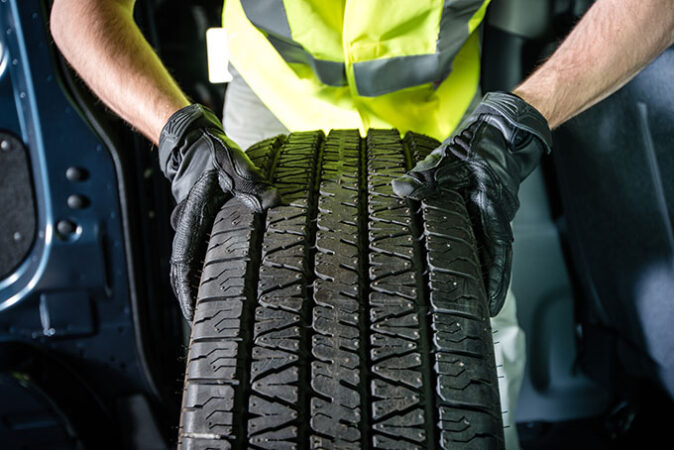Engineers borrow a tree’s cellulose to toughen new materials
One of these new materials mimics the hardness and toughness of bone

This car was made from trees! But it’s not out of their wood. Scientists took only the toughest, strongest part of wood — its nanocrystals of cellulose — and added them to other materials. Experts are hoping that this secret ingredient could allow us to use far less plastic.
Courtesy of Ministry of the Environment Government, Japan
What happens when you smash a plastic bottle? It squishes. What about a glass bottle? It breaks. In engineering lingo, that means plastic is tough and glass is strong. Most manufactured materials can be tough or strong — but not both, says Abhinav Rao. While working on his PhD at the Massachusetts Institute of Technology in Cambridge, he helped create a new material that is both tough and strong.
He and his colleagues describe how they did it in the March issue of Cellulose.
Its main ingredient comes from trees. Rao, now an engineer at Lam Research in Eaton, Ohio, was inspired to create this material “by looking at what nature has to teach us.”
All plants contain tiny, toothpick-like crystals in the walls of their cells. Called cellulose nanocrystals, they give plants their structure and strength. And as their name implies, these crystals are super-tiny. You’d need to stack 500 of them to match the width of a human hair.
Engineers can process wood to remove all but those cellulose nanocrystals. “We’re breaking trees down into their smallest components,” explains Emily Cranston. A wood scientist, she did not take part in the new study. Cranston works in Canada at the University of British Columbia in Vancouver.

Once you’ve got a bunch of these nano toothpicks, the possibilities are nearly endless. “We can turn trees into lots of different cool things,” says Cranston. The new work is part of a huge field, she notes, with hundreds of researchers. Some are turning cellulose nanocrystals into parts for electronics. Others are using them to make medical devices. Still others are using them to clean water. A team in Japan has even built an entire car out of materials that contain cellulose nanocrystals!
Until Rao’s team came along, though, the share of those nanocrystals in these new materials was very small (plastic tended to make up the rest). The reason they didn’t contain more, Rao explains, is that the nanocrystals tend to clump. Then their tiny toothpick shapes are lost — as is their incredible toughness and strength.
Shake that gel
To increase the number of tiny toothpicks that could be packed together without clumping, Rao’s team invented a new gel. It starts with a liquid that has some plastic and cellulose nanocrystals. “At that point, the cellulose is sitting at the bottom,” explains Rao. Next, the team vibrates the liquid using ultrasonic waves. This stirs in the nanocrystals. Once everything is fully mixed, the liquid “freezes into a gel and stops moving,” says Rao. The process is quick. “It happens in seconds.”

This gel is much stiffer than Jell-O. You could turn a cup of it upside down and it wouldn’t pour out. But a 3D printer or a molding machine can put enough pressure on the gel to force it into new shapes. As a test, Rao’s team crafted a tooth-shaped object from the gel. Exposing this gel tooth to heat hardened it into a solid. The material also shrank a lot, but ended up as strong and tough as some types of bone.
The properties come from the new material’s structure. A small amount of softer plastic surrounds each hard cellulose nanocrystal or small group of crystals, Rao explains. So cracks can’t cut through the entire material. “The crack has to meander,” he says. Since it must follow such a twisty path, any crack usually doesn’t make it very far. That keeps the material firm.
By weight, more than 60 percent of the new material is cellulose nanocrystals. The rest is plastic. “That’s great,” says Cranston. “There’s lots of tree in there.”
A greener world

We will always need materials with certain properties, such as strength, toughness or durability. But there’s another property to think about, too, says Rao — kindness to the planet. Since cellulose nanocrystals come from trees, they are “greener” than plastic or most other synthetic materials.
People know how to manage forests so that enough new trees are planted to replace all the harvested wood. It might also be possible to get the crystal toothpicks from algae or even bacteria. Unlike plastic, which comes from fossil fuels, these cellulose bits are a nearly endless renewable resource.
Plastic also harms the environment when it fails to biodegrade. The cellulose crystals break down easily. However, a material that contains these crystals mixed with plastics may not break down or recycle easily, especially if it’s designed to be strong and tough. Engineers, says Cranston, must find a balance among all these important properties. With that in mind, she asks, “What would you build with an all-natural, nano-sized toothpick?”
This is one in a series presenting news on technology and innovation, made possible with generous support from the Lemelson Foundation.







